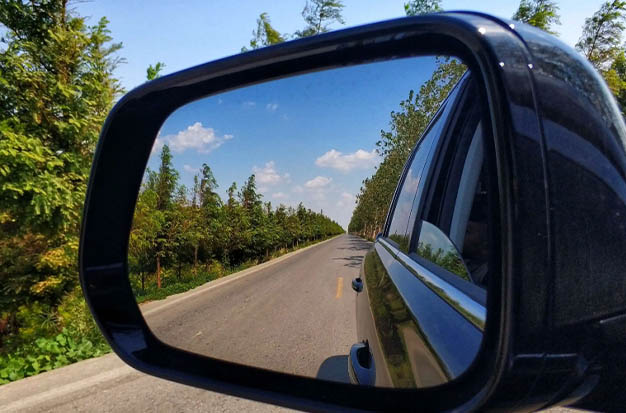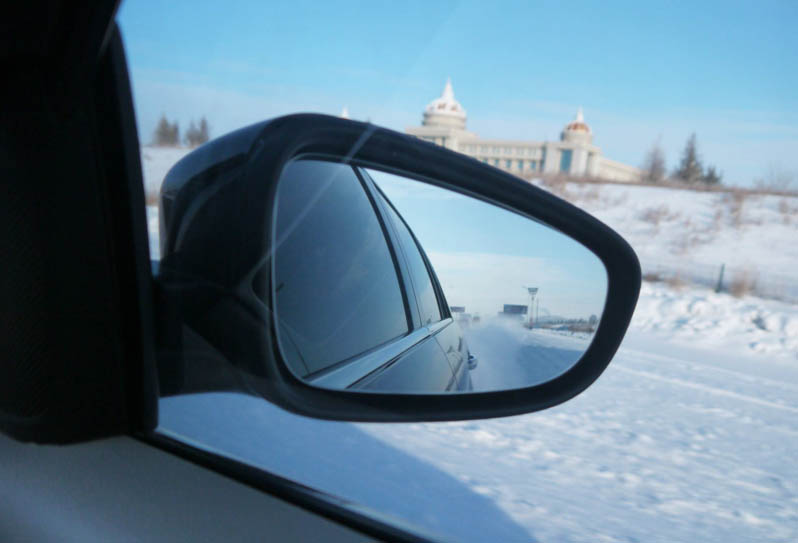
How Often Should You Check Your Mirrors During Driving a Truck?
Each time you signal to change lanes or make a turn, as well as immediately before and immediately after the turn, you should always check your mirror. By taking a quick glance every five seconds or so, you can build up a really accurate mental map of your surroundings. If you need to quickly change lanes to avoid something that is thrown off a car in front, you won’t even need to look to know whether a car is next to you. Additionally, you’ll be aware of any vehicles that were there but have suddenly disappeared and there may be in your blind spot, in which case you should exercise caution.
How Often You Should Check Mirrors When Driving
Every 5 to 8 seconds, you should check your mirrors. Even though it might seem like a lot, you can move quite a distance in a short period of time by checking the mirrors every 5 to 8 seconds.
The table above shows that a considerable amount of ground is covered at 30 mph in just 5 seconds. We need to check our mirrors frequently while driving because a lot can change in just 5 to 8 seconds.
While maintaining a constant speed and direction, you should check your mirrors every 5 to 8 seconds. You don’t have to constantly check the three mirrors. For a quick visual overview of what is happening behind you, a quick glance, primarily in the internal rear-view mirror, is sufficient. Remember that your primary focus should be ahead, so only a quick glance is necessary.
Why Do I Keep Checking My Mirrors?
First of all, this does not imply that you must look in your mirrors every five seconds because, quite frankly, you would miss what was happening in front of you. You only need to look in each of the three mirrors once every five seconds. The key to being a successful defensive driver is maintaining your awareness of everything going on around you. Say, for example, that you glance in your mirrors and spot a car approaching from behind you. That car leaves in five seconds. If you can’t see it in your other mirrors, it’s probably in your blind spot, so you should ask yourself where it went. Additionally, you should be aware of the vehicles in your immediate vicinity so that, in an emergency, you will know which lane to move into or whether it is safe to slam on your brakes.
The fact that your short-term memory probably isn’t as good as you think it is is another reason why you need to check your mirrors so frequently. Most people struggle to recall what they just noticed behind them when pressed. Have a backseat driver question you about what you just saw in your mirrors at an unexpected time to put yourself to the test. Since it has probably been five seconds already, you will probably need to look in the mirrors once more just to answer them.
Make it a goal to check your mirrors every five seconds the next time you are driving. You will become a much safer driver on the road by getting into the habit of doing this. Count to five and check your mirrors. Check your mirrors after counting to five. Until you get there, keep repeating until you succeed.

How to Properly Check Mirrors to Remove Blind Spots
Every time you get into the car and after making any seat adjustments, check the position of the rearview mirror. It’s possible that you’ll need to adjust the rearview mirror once you get behind the wheel because car vibrations can cause the mirror to move in tiny steps.
When the car is stopped, only adjust the rearview mirror. When you first sit in the driver’s seat, check your rearview mirror.
You want to be able to use only your eyes and not your head when using this mirror so that you can see as much of the back window as you can. Once you can see clearly out the back window, adjust the rearview mirror by making small adjustments while seated in your usual driving position.
For drivers taller than 6 feet: You might want to reverse the mirror’s orientation. As a result, a significant blind spot may be reduced by raising the bottom edge of the mirror a few inches.
The Best Way to Check Your Mirrors While Driving
Using the MSM method is the proper way to inspect your mirrors.
The side mirrors should come first, then the rearview mirror. As I’ve already stated, you must first check your rearview mirror before checking the left side mirror to be aware of what is going on to your left side of the car.
You must look in the rearview mirror and then the right side mirror to see what’s on the right side of your car.
You’ll probably find yourself looking in the rearview mirror more frequently than the side mirrors if it’s already become a habit. In the end, it’s a good idea to check your rearview mirror more frequently because it provides a more precise distance estimate of the vehicle behind you than the sides do.
Checking the Mirrors Before a Change of Speed or Direction
You should check specific mirrors before changing your speed or direction in addition to checking random mirrors every 5 to 8 seconds. Common names for this include mirror, signal, and manoeuvre.
- Speeding up: To make sure no other car is about to pass you, check all of your mirrors before accelerating.
- Slowing down: You ought to look in your mirrors before slowing down in case a car is closely pursuing you. In that case, you must reduce your speed more gradually so that the driver behind you has time to respond.
- Direction: Always check your mirrors before changing directions, signal your intention before moving forward, and check your mirrors again after.
How to Remember to Check Mirrors When Driving
Many motorists struggle to remember to check their side mirrors while on the road.
I’m used to checking my reflection. Let me explain how I am able to do it so quickly.
Every time I get into a car, I tell myself that it only takes a split second for an accident to happen. I maintain my attention and alertness by regularly checking my mirrors and keeping my eyes on the road in front of me.
I constantly remind myself while I’m driving that other drivers might become distracted at any moment. I just need to remember that and check my side mirrors to maintain a safe distance from other vehicles nearby.
It takes more practice to remember to frequently check your side and rearview mirrors. To perfect this habit, you must practice.
To recall what I did to become proficient at checking my mirrors, I went back in time to when I was a new driver. Here are some suggestions to help you remember to check your car’s mirrors.
Conclusion
Many drivers learn the fundamental habit of checking their car’s three mirrors when they are still learning how to drive. Your teacher will keep reminding you to check your mirrors.
To prevent accidents when driving alone, frequently check your side and rearview mirrors. I do it every ten seconds or so. You can afford to check after 20 to 30 seconds if the road is less congested.
The frequency of checking the three mirrors should generally be higher on a busy road than on one with few to no cars.



Average Rating